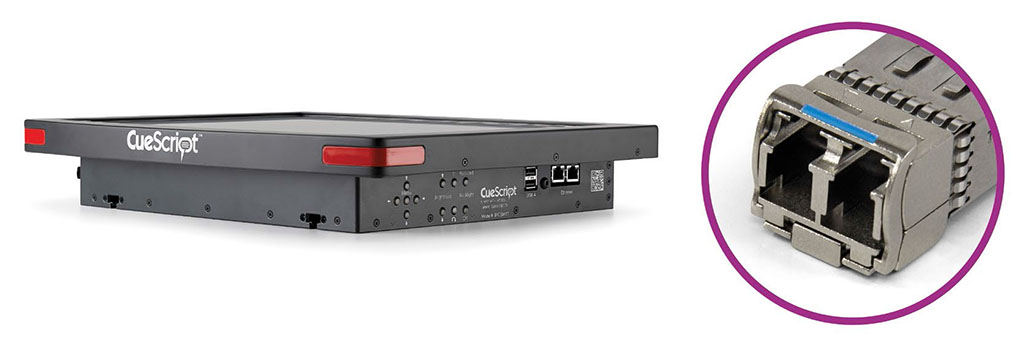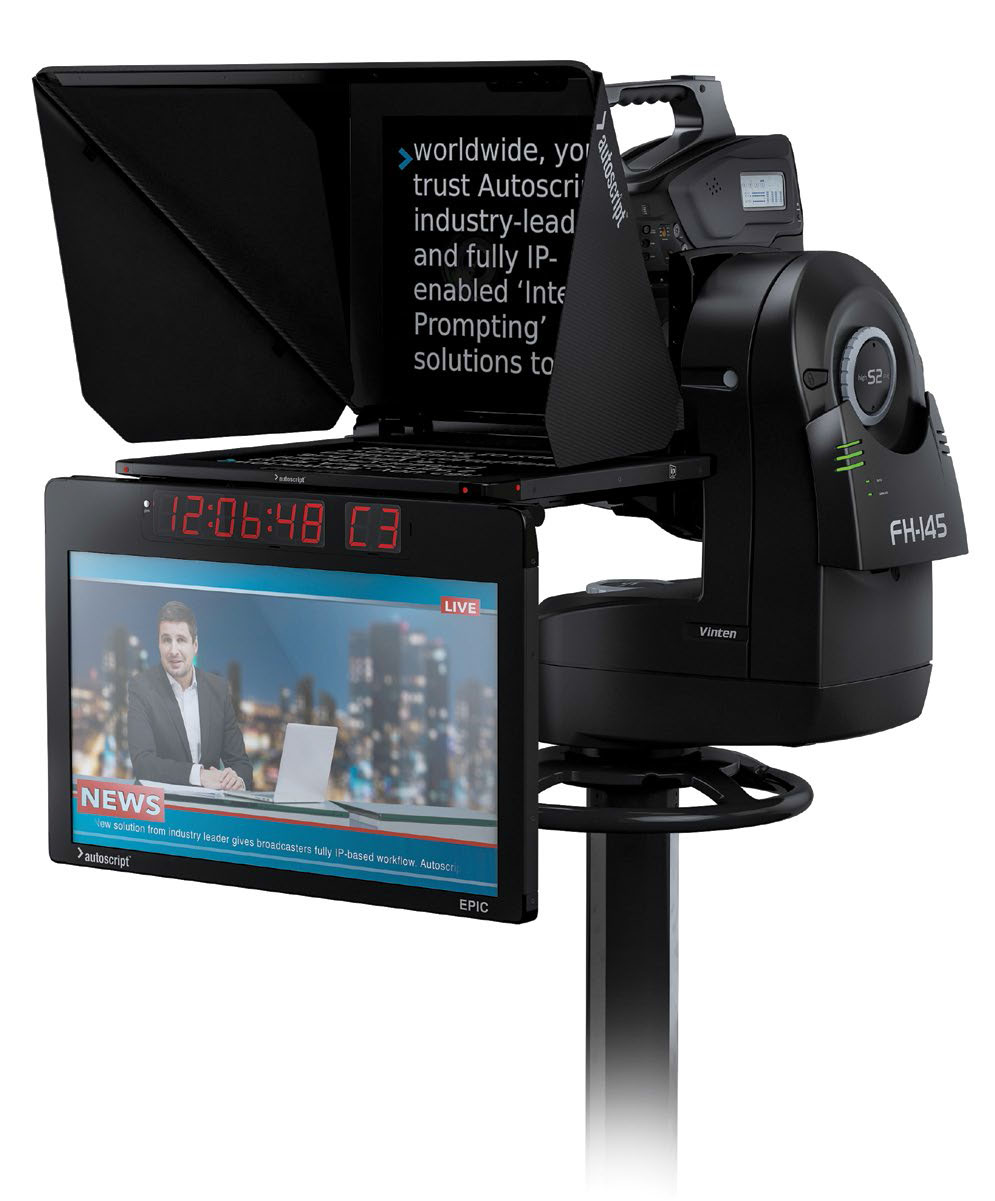Next-Gen Prompters Help Broadcasters Stay on Script
SEATTLE—Teleprompting has come a long way since the half silvered mirror allowed scripts to be scrolled in front of the camera lens, unseen by the viewers at home. Today, the influx of mobile devices connected via IP has greatly expanded options and capabilities for any newscaster (or politician).
NO MORE CONVERTING

The new standard for IP video transport prompted Cuescript to roll out the CSMV2, a prompting system based on the SMPTE-2110 protocol, according to Michael Accardi, president of the company.
“With this solution, I don’t need a single adapter cable, I don’t need a single up converter, down converter, all that expense, all those failure points,” he said. “We’ve easily been working on that five years, because SMPTE hadn’t actually decided on a standard until recently.”
Not everybody needs to dive in head first to a total IP prompting solution, however.
“There are now some applications where you say: ‘this IP stuff sounds interesting,’” Accardi added. “But if you’re in an installation that has distribution for composite or HD-SDI, going to an IP solution doesn’t buy you much.”
Accardi says stations can use IP to stay connected between hubs and remote facilities.
“They can connect between the big facility and the little remote facilities via IP, as long as they can see the network,” he said. “They can prompt to that remote facility and it doesn’t cost them anything. It’s such a simple, simple way to do it.
“So we’re actually thinking IP is a hybrid,” he added. “It kind of works with the guys who have coax already, but when they’re doing a remote, that’s all SMPTE 2110 IP.”
READY FOR IP

Robin Brown, product manager for prompters at Autoscript and Autocue with The Vitec Group, agrees that not everybody needs to go full-tilt into IP prompting. “Customers or users who are a little bit apprehensive about going all IP can still use exactly the same workflow that they did before,” he said.
But they want to be ready when a customer wants to deploy IP. Brown said the company began redeveloping its Autoscript products “from soup to nuts” approximately two and a half years ago.
“We’ve completely redeveloped the application, the connection and the mode of data transport,” he said. “So basically, all of the devices now have IP connectivity.”
Brown emphasizes that the new IP-based prompters send data, not video over IP.
“When the script comes in from the newsroom, when we send it to our device which is either in Seattle, or in L.A. or it’s in San Francisco or in London, it gets sent as small data packets,” he said. “The rendering is done in the device itself. So the monitor which the talent is sitting, reading from, we’re not streaming video.
“So you can send very small data packets very quickly, very easily, very simple to configure, and it means you can do prompting anywhere,” Brown added. “And we also do it on an iPad. So rather than just a big studio teleprompter, we can send exactly the same data to an iPad. If you have breaking news and you need a prompter, you can take your iPad with you, stick it on your Wi-Fi network, and the scripts are then scrolled from the main newsroom studio.”
TEAM EFFORT
Chris O’Brien is not only managing partner of Norwood, N.J.-based prompter manufacturer Telescript International, he also owns VIP, a teleprompting service company.
“Because of the relationship between Telescript and VIP,” he said, “we use feedback from VIP operators to help us change and adapt our prompting equipment. We make adjustments for the industry and professional operator based on the feedback we get from them.”
One feature they’ve added for the most complicated prompting jobs is a proprietary messaging system, where operators can send private messages to each other. He cited the example of an Oscars or Emmys program, “where you need multiple operators working the show because it’s so difficult to do,” he said. “There are so many changes. Maybe they’re running out of time. Maybe somebody didn’t show up, which happens.
“So with our messaging system, one operator can send a message that says ‘hey listen, I’ve made an update, or there’s something going on,’ where they can talk to each other. And it allows multiple writers to make changes to scripts and send them to the prompter while it’s still in the Prompt mode. It’s a big deal to allow those instantaneous last minute changes that those shows demand.”
STAYING UP TO DATE
Prompting software needs to stay current with the latest OS it resides on, according to JT Meidl, president of Mirror Image Teleprompters in Oshkosh, Wis. “There’s nothing worse than software that doesn’t work,” he said.
“We deal with a lot of schools and small TV stations as well, and when they make an investment in software, they don’t want it obsolete after a year or so. So it’s important to me that software is updated to the latest operating systems.” (All prompter makers we talked to made a point of staying current to operating systems.)
Meidl pointed to a split of customer opinions when it comes to replacing monitors for teleprompting systems. “On the industrial side, people want HDMI inputs,” he said. “On the professional side, which is basically the TV stations, they’re looking for SDI inputs. And that’s kind of an interesting thing.
“We’re replacing a lot of older LCD panels, which are VGA monitors, with SDI monitors,” Meidl added. “And of course they’re Pro Series, and they have video reverse. People are really enjoying that because they don’t have to worry about the flip boxes to reverse the mirror effect; they’re having the software doing the flip for you.
“It’s a nice monitor upgrade: we’re able to save the mirror, save the hood, save the bracket, save the housing. Just get a better monitor in there.”
Get the TV Tech Newsletter
The professional video industry's #1 source for news, trends and product and tech information. Sign up below.
